What is peel and stick wallpaper?
Peel and stick wallpaper is an innovative type of wall décor with self-adhesive backing. Unlike traditional wallpaper, it does not require any additional glue or wallpapering paste to adhere to a surface. This makes it much easier to install, as it requires no professional help or complex procedures.
What should I consider before ordering peel and stick wallpaper?
Start by carefully measuring the wall you plan to cover with a peel and stick wallpaper to make sure that you purchase the correct amount. Always buy a bit more wallpaper than you think you'll require as you need to take into consideration mishaps and cut offs. Remember to check that all rolls you order come from the same batch to guarantee colour consistency.
Which tools do I need to install peel and stick wallpaper?
Unlike traditional wallpaper, self-adhesive wallpaper models require very few tools for the installation process. Before you get started, make sure you have the following items to hand:
- tape measure
- spirit level
- plastic smoothing tool
- metal ruler (alternatively a straight edge)
- cutter knife
- pencil
- sponge or cloth
- ladder
Should I prime the wall before installing a peelable wallpaper?
Self-adhesive wallpaper requires a clean, non-greasy, dry and smooth surface. For best results, we recommend priming the wall to make sure you work with an even surface. Choose a premium satin or semi-gloss paint and wait until it is fully dry. Bear in mind that fresh paint can take up to four weeks to cure. Do not rush this process, as wet paint will result in the removable wallpaper not being able to stick to the wall.
Would it be recommended to clean the wall before installing a peel and stick wallpaper?
Even if the surface is smooth and doesn’t require a primer, it is a good idea to spend a few minutes getting rid of dust and dirt before starting the installation process. Simply wipe down the wall surface with a damp sponge and a mild, non-abrasive cleaner. Allow the surface to dry completely overnight.
Which steps should I follow to install my peel and stick wallpaper?
To guarantee a perfect outcome for your decoration project with peel and stick wallpaper, we recommend carefully following the instructions below:
1. Pre-cut strips

Start by cutting strips of your self-adhesive wallpaper to wall height, allowing a few centimetres on each end for trimming. Use a sharp cutter knife, changing the blade often to help maintain a smooth clean cut. If the wallpaper you have picked has a pattern, make sure to align its design from strip to strip before cutting them. Number the back of each length of wallpaper to keep your design in the correct order.
2. Mark the wall for the first strip
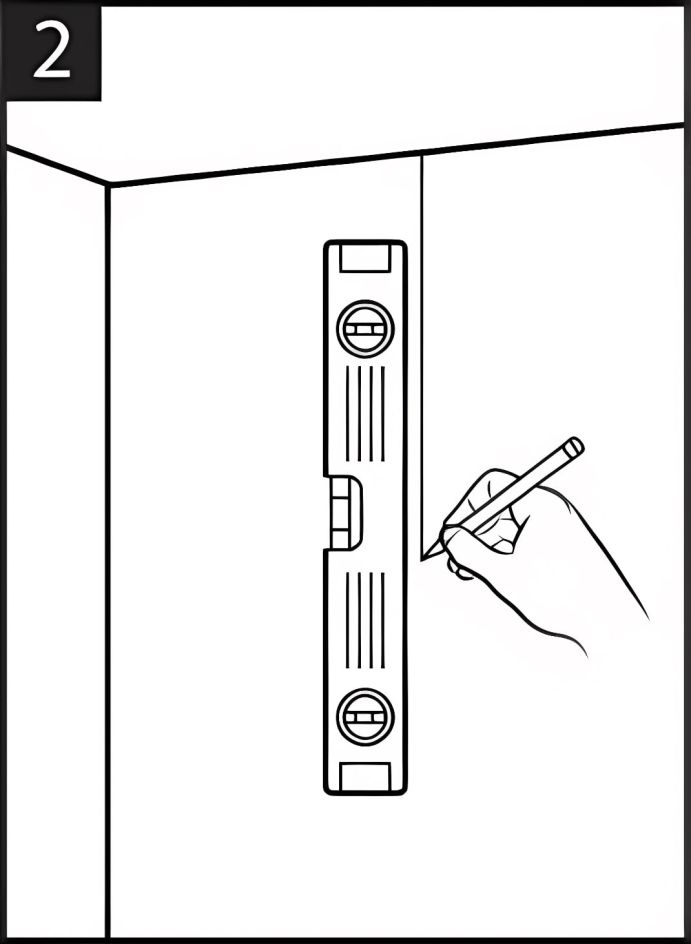
Correctly installing the first strip is essential, as it is the basis for all other strips, so take your time. Begin on the left side of the wall. Starting from the corner, measure the width of the paper and put a light mark on the wall with a pencil. Using your level, draw a straight line down. Use this line as the guide for your first length of wallpaper.
3. Start hanging the first strip

Take the first strip and peel 30 to 60 cm of the backing away from the wallpaper. Apply the paper to the top of the wall, allowing a bit of excess to overlap which will be trimmed off the ceiling later. Make sure you align the right side of the strip to your mark and lightly press the edge to the wall along the mark. You need to achieve a vertical seam. Remember you can reposition the strip if needed.
4. Work your way from top to bottom
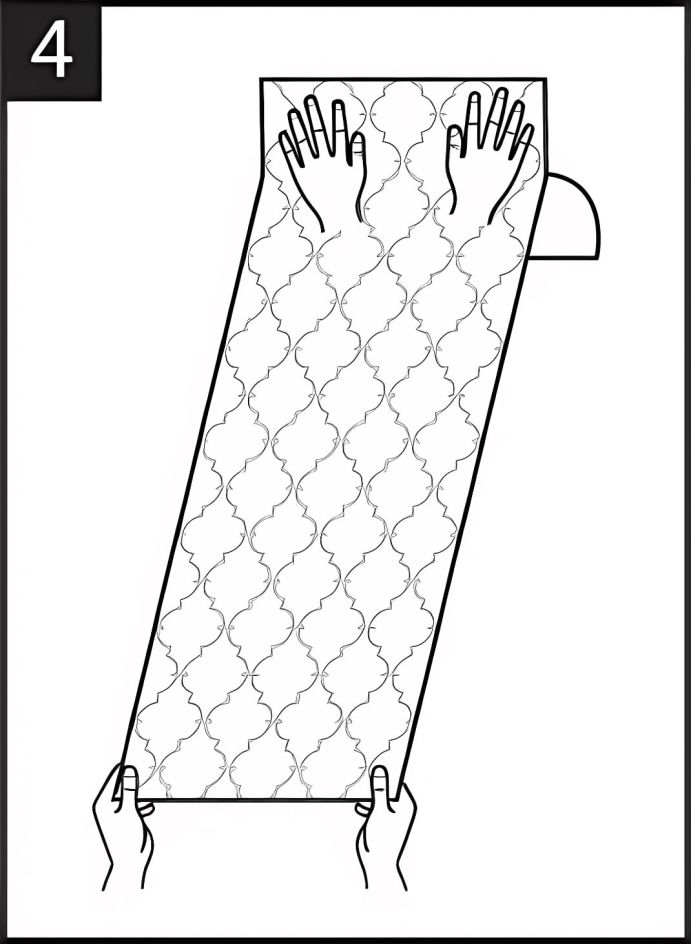
Working from top to bottom, pull the backing away as you evenly press the paper to the wall a few cm at a time. Be careful not to pull too hard, as if the material stretches the pattern will not align. It’s best to complete this process with another person, with one guiding the paper at the top and along the seam, and the other holding the opposite edge away from the wall until the seams are lined up.
5. Smooth the surface
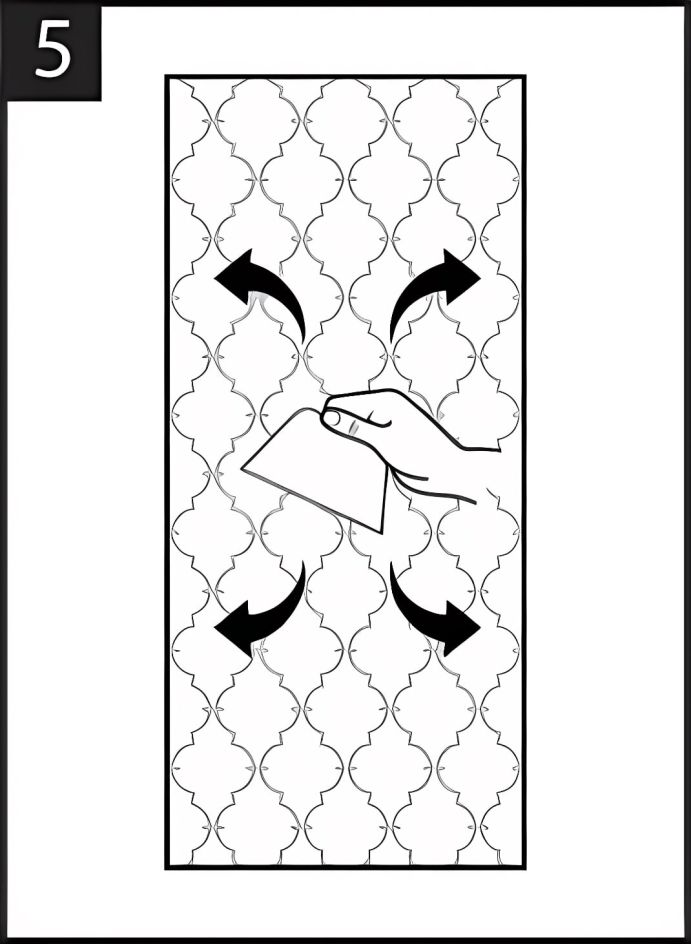
Using a rigid smoothing tool, work your way down the strip in a back-and-forth motion, smoothing the material to the wall to activate the glue already present on the coating and to push out any air bubbles (move them from the centre to the edge of the strip). Apply steady and firm pressure to ensure all air bubbles are removed and the wallpaper safely adheres to the wall.
6. Trim the excesses and repeat with the next strip
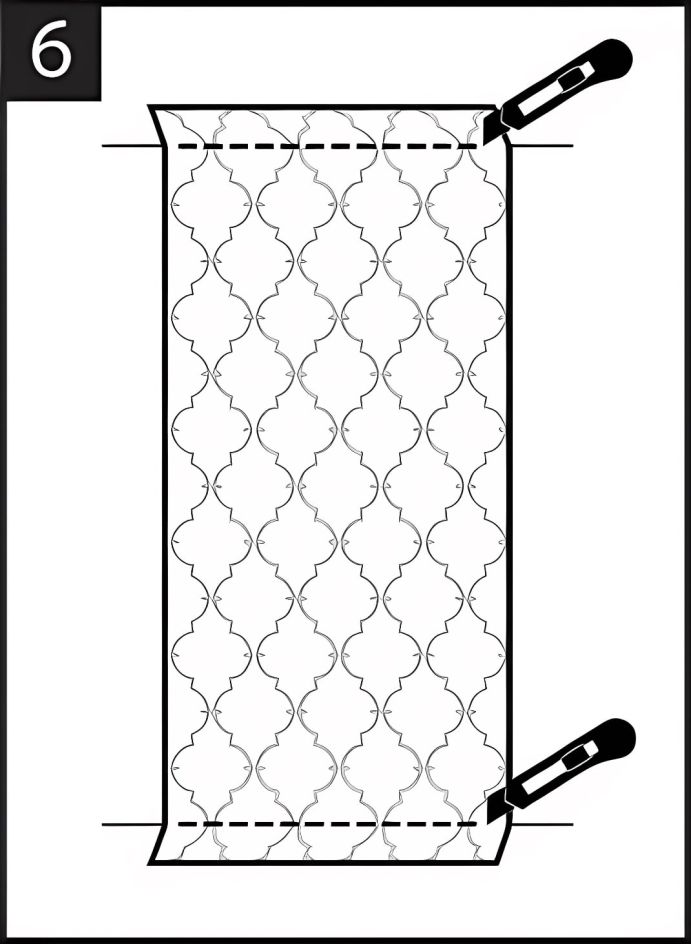
It is now time to trim excess material at the ceiling and at the floor level with a straight edge and a sharp cutter knife. You can repeat the above procedure aligning your next strip to the right edge of your previous strip.
7. Overlap patterns where necessary
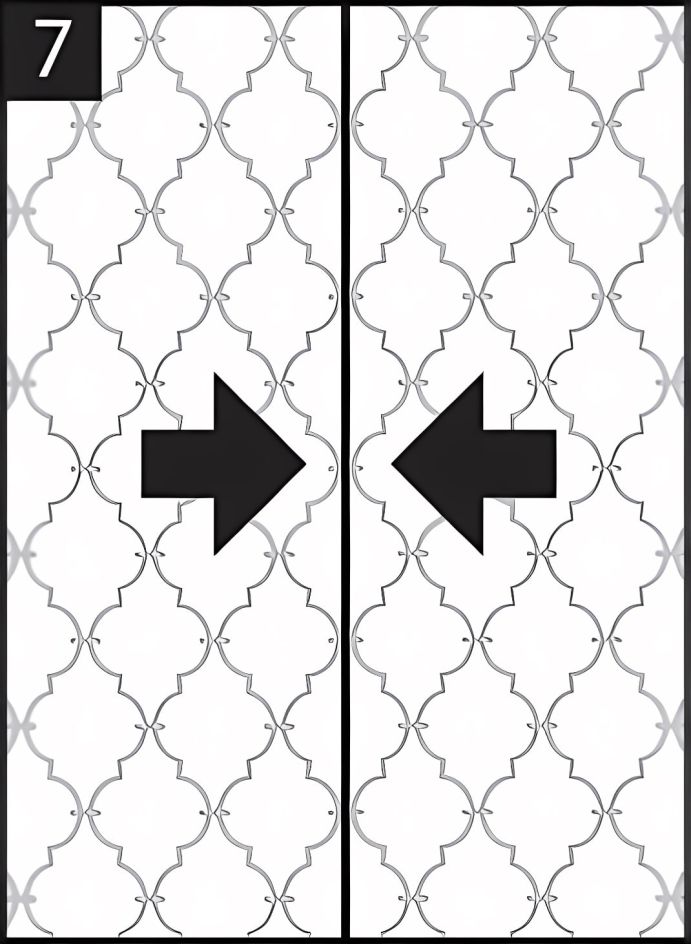
For some patterns, it might be necessary to over-lap each strip by a few millimetres to ensure better results. The overlap should be no more than 0.15 cm. In these cases, pay extra attention to make sure that the pattern aligns perfectly.
8. Tips and tricks
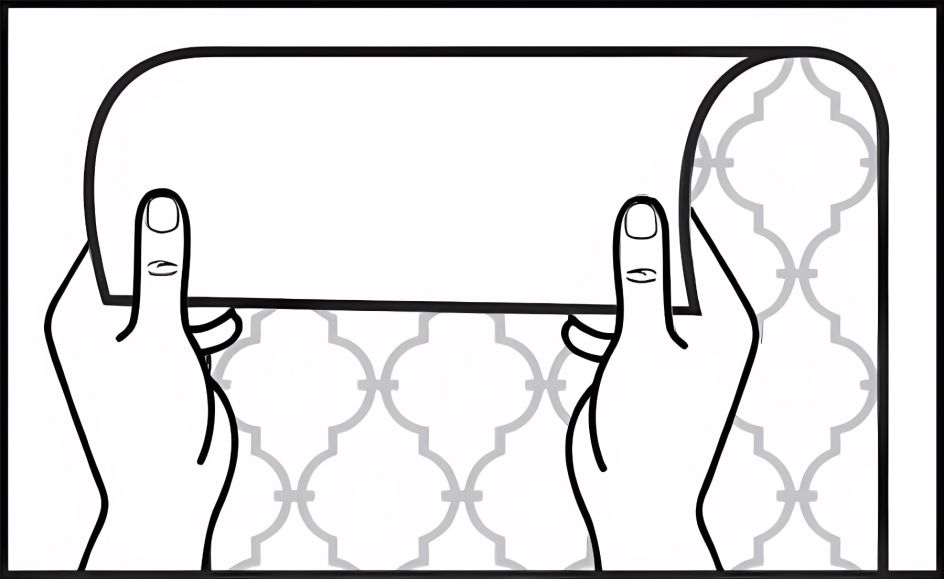
- Be patient, as this is key to hanging peel and stick wallpaper.
- If wallpapering all walls, look at the room and identify its most prominent spot. This is where you want your wallpaper to look its best, so start from the left corner in that prominent area.
- Should bubbles reappear, work them out by applying firm pressure with a smoothing device.
How long does peelable wallpaper last on the walls?
The durability of a peel and stick wallpaper depends on the overall quality of the product you purchase as well as the surface you choose to install it on. A high-quality self-adhesive wall décor in non-woven material can last for as long as you’d like to keep it up, provided that the surface you install it on is clean, smooth and has been treated with the correct paint finish.
Can I use peel and stick wallpaper on any type of wall?
A high-quality peel and stick wallpaper can be used on most surfaces, including furniture. However, self-adhesive wallpaper needs a surface that it can effectively adhere to. This means that if you plan to use it on a wall with a rougher surface, it may not adhere perfectly, thus limiting its lifespan.
Can self-adhesive wallpaper also be used to decorate furniture?
The usage of peel and stick wallpaper is not restricted to just walls. It is also an excellent option for furniture, bringing new life to objects that have seen better days. Peel and stick wallpaper can be used to decorate any section of a specific piece of furniture, front, sides, top, or just the insides of drawers, leaving you with a plethora of creative options.
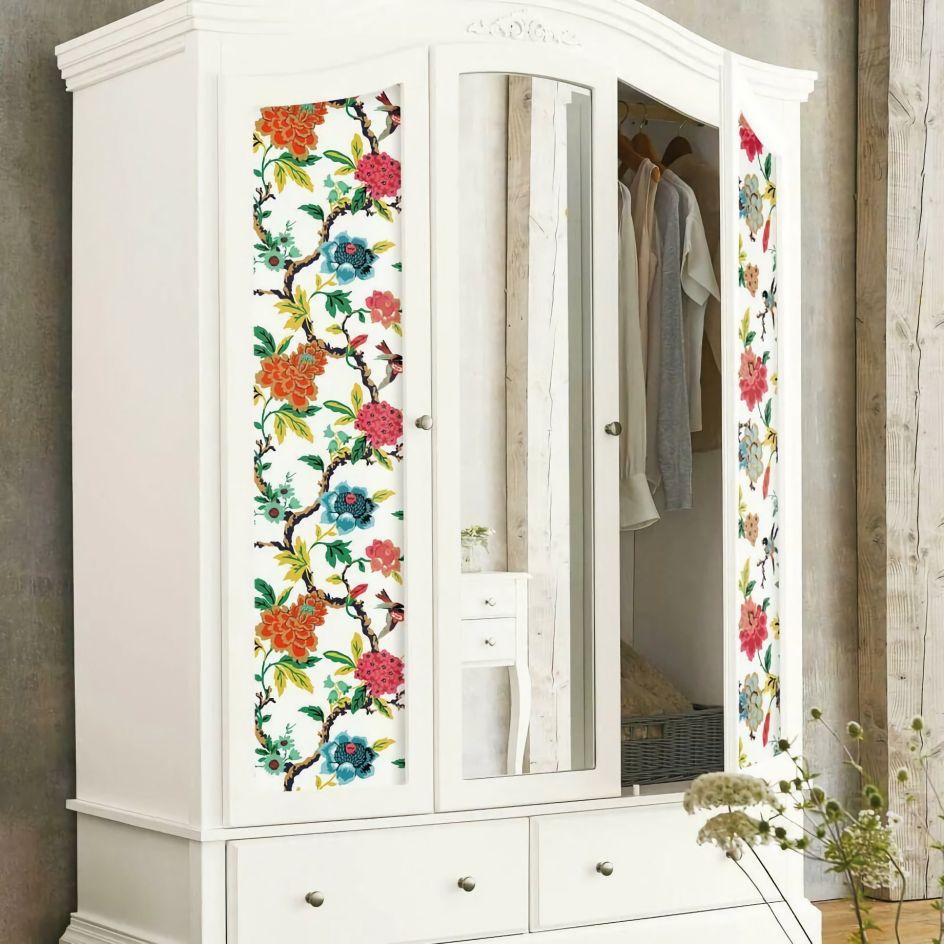
Is peel and stick wallpaper easy to install?
Compared to traditional wallpaper, peel and stick wallpaper is easier to install. It requires almost no prior experience, only a handful of tools, and it allows you to correct small mistakes and misalignments with ease, by just peeling the sheet you have attached to the wall off again and readjusting its position.
Is peel and stick wallpaper easy to remove?
Peelable wallpaper can, as the name indicates, simply be pulled off the wall. Unlike traditional wallpaper, removing it is something that can be done in minutes rather than hours. It is important to perform this action slowly and with care, particularly if it was installed a long time ago, so that the paint underneath isn’t damaged.
Is it difficult to align peel and stick wallpaper patterns?
Each length of wallpaper can be removed and reattached until you are happy with the result and the alignment. Bear in mind: the more intricate the pattern, the more complex the installing process. If you prefer an easier task, opt for a self-adhesive wallpaper with a simpler, larger pattern, or even for a textured, monochrome model.
In which sizes come peel and stick wallpaper models?
Like traditional wallpaper, all high-quality non-woven peel and stick wallpaper is sold in rolls. Our self-adhesive wallpaper models come in two sizes, with a width of either 0.52 m or 0.68 m and a length of 6.00 m. This is enough to produce strips for a standard height wall. Make sure to always order at least 10-15% more than the surface you are planning to cover to allow for cut-offs, small adjustments and any other eventuality.
Can I use peel and stick wallpaper over standard wallpaper?
You can install peel and stick wallpaper over existing standard wall décor, provided that its surface is flat and the existing wallpaper adheres to the wall in its entirety, without presenting bubbles or areas where it is starting to peel off. If you decide to install a traditional wall décor and plan to then hang a peel and stick wallpaper over it, make sure that you wait at least four weeks to make sure the first layer is fully dry.
How do I clean peel and stick wallpaper?
All peel and stick wallpapers sold in our shop are washable. If you need to remove a small stain, use a mild detergent and a damp sponge or cloth. Check the sponge beforehand and avoid anything too abrasive that can scratch the wallpaper surface. Start by mixing the detergent in water and apply the solution onto the wallpaper. Spread it gently and evenly across the surface with a sponge, then wipe it off using a soft damp cloth. Wipe the surface with a clean and dry piece of cloth.
Can I reposition peel and stick wallpaper after I installed it?
Yes, peelable wallpaper is reusable multiple times, so you can take it with you if you move to a new home. Remember not to throw away the backing paper you peeled off during the first installation, so you can store it until the next use. If you've already thrown it away, you can use wax paper as a replacement.
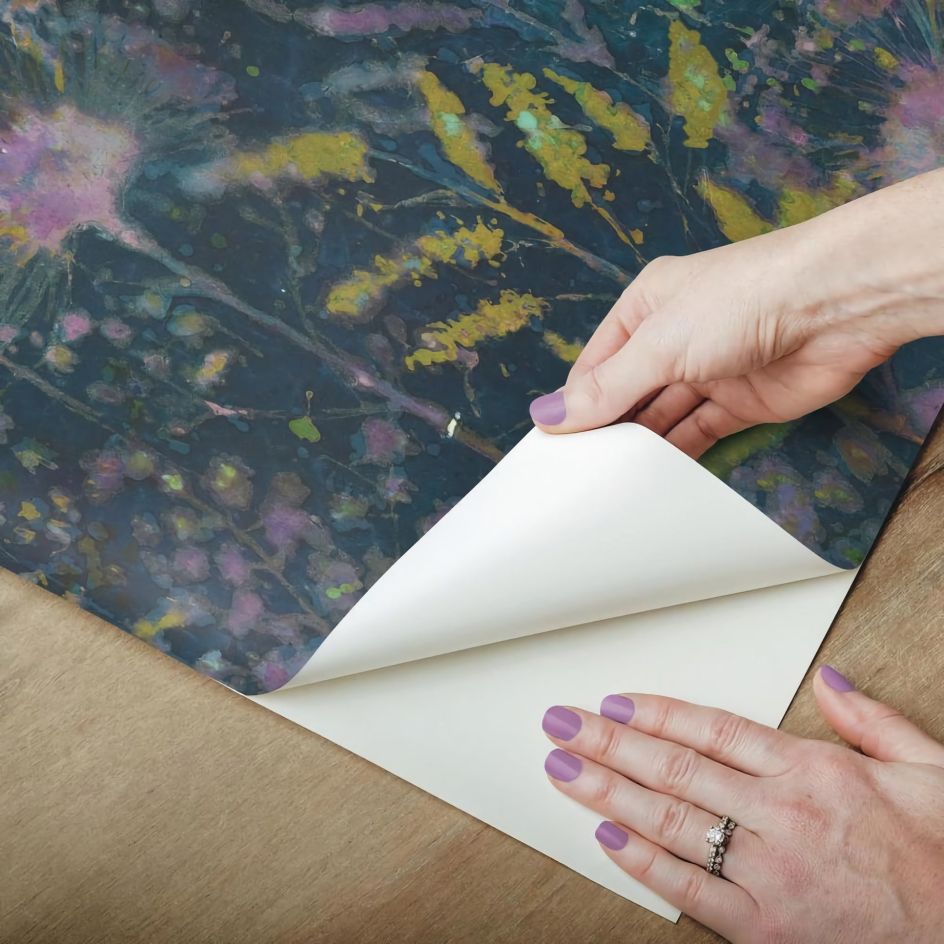
Can peel and stick wallpaper be applied in bathrooms or kitchens?
Our peel and stick wallpaper can be used to decorate bathrooms and kitchens. Extra care should be given to prepping the surface underneath to ensure the best possible adherence. Make sure the bathroom is fully dry and has been aired sufficiently before beginning the installation process. We recommend opening the windows and airing the room after a bath or a long shower to avoid an excessive humidity build-up.

Is there any area where I should avoid installing peel and stick wallpaper?
Peelable wallpaper comes with a strong self-adhesive backing that guarantees it will adhere to most surfaces. However, it should NOT be applied directly above heating elements that push hot air upwards or behind radiators, since the heat will dry out the adhesive, reducing its longevity.

